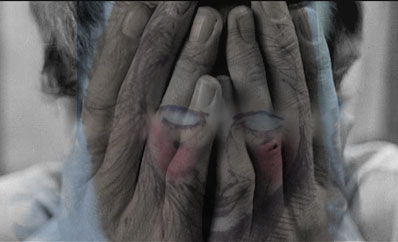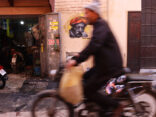Autore
Indice
- Introduction
- Geometrical and immaterial symmetries: platforms to lodge asymmetric events
- Hierarchy and symmetries of bone structures as motherboard architecture to optimize cells mechanotransduction
- Chiral asymmetries (and slight violations of symmetry) regulating self-repair in bone
- Conclusions
S&F_n. 12_2014
Abstract
By disserting on “Symmetry in Physical Laws” during one of his lectures, Richard P. Feynman asked: «Why is nature so nearly symmetrical?». He added: «No one has any idea why. The only thing we might suggest is something like this: There is a gate in Japan, a gate in Neiko, which is sometimes called by the Japanese the most beautiful gate in all Japan; it was built in a time when there was a great influence from Chinese art. This gate is very elaborate, with lots of gables and beautiful carving and lots of columns and dragon heads and princes carved into the pillars, and so on. But when one looks closely he sees that in the elaborate and complex design along one of the pillars, one of the small design elements is carved upside down; otherwise the thing is completely symmetrical. If one asks why this is, the story is that it was carved upside down so that the gods will not be jealous of the perfection of man. So they purposely put an error in there, so that the gods would not be jealous and get angry with human beings. We might like to turn the idea around and think that the true explanation of the near symmetry of nature is this: that God made the laws only nearly symmetrical so that we should not be jealous of His perfection!». In attempting to provide an answer to the Feynman’s question, the present paper show how one inevitably incurs a paradox.
Ergo rerum inter summam minimamque quid escit? Nil erit ut distet; nam quamvis funditus omnis summa sit infinita, tamen, parvissima quae sunt, ex infinitis constabunt partibus aeque.
Quod quoniam ratio reclamat vera negatque credere posse animum, victus fateare necessest esse ea quae nullis iam praedita partibus extent et minima constent natura.
Lucrezio
When this idea [the principle of relativity of Einstein and Poincaré] descended upon the world, it caused a great stir among philosophers, particularly the “cocktail-party philosophers”, who say,
«Oh, it is very simple: Einstein’s theory says all is relative!» [...] One of the consequences of relativity was the development of a philosophy which said, «You can only define what you can measure!».
Richard P. Feynman
The history of mechanics shows abundantly that there is no one “scientific method” that should be used in all cases and at all times.
Different methods, different “philosophies of science”, have been successful at different periods, for different problems, and sometimes for the same man on different occasion.
Clifford Truesdell
- Introduction
Symmetry (from the Greek συμμετρια, composed of συν, with, and μετρον, measure) is intrinsically (etymologically) related to the concept of measure; as a consequence, if one accepts that «you can only define what you can measure»[1], one has to also admit that symmetry is somehow a key for understanding the world. This close relationship between symmetry and nature, as explicitly reported in the first incipit of the present article, is in nuce already present in the De rerum natura[2], where Lucrezio, by dealing with the concepts of endless iterations and infinite subdivisions of unities, surprisingly (or perhaps not) addressed current themes of the modern physics and anticipated more complex geometrical forms of symmetry such as self-similarity and fractals!
By talking about “Symmetry in Physical Laws” in one of his lessons collected in The Feynman Lectures on Physics, Richard P. Feynman said:
Why is nature so nearly symmetrical? No one has any idea why. The only thing we might suggest is something like this: There is a gate in Japan, a gate in Neiko, which is sometimes called by the Japanese the most beautiful gate in all Japan; it was built in a time when there was a great influence from Chinese art. This gate is very elaborate, with lots of gables and beautiful carving and lots of columns and dragon heads and princes carved into the pillars, and so on. But when one looks closely he sees that in the elaborate and complex design along one of the pillars, one of the small design elements is carved upside down; otherwise the thing is completely symmetrical. If one asks why this is, the story is that it was carved upside down so that the gods will not be jealous of the perfection of man. So they purposely put an error in there, so that the gods would not be jealous and get angry with human beings. We might like to turn the idea around and think that the true explanation of the near symmetry of nature is this: that God made the laws only nearly symmetrical so that we should not be jealous of His perfection![3]
To debate of symmetry, as well as to find details of the Neiko gate (probably Nikko?), is a daunting task. However, both the issues are beyond the objectives of the present contribution, which is instead limited to devote the following paragraphs to try to envisage a mechanically-founded answer to the above recalled Feynman’s question, by starting from some suggestions coming from the bone microstructure and its functioning mechanisms. At the end, however, a paradox occurs.
- Geometrical and immaterial symmetries: platforms to lodge asymmetric events
Symmetry is the property of the objects which result to be invariant under prescribed transformations such as, for instance, rotation or reflection[4].
Symmetry is classically defined (or imagined) within the framework of “standard” geometry, but – actually – it cannot be relegated to this sole fence. Symmetries can be indeed met out of the perimeter of the classical geometry: it is sufficient to think to fractals[5], able to fit and redraw the rugged coastlines and to trace the three-dimensional profiles of the mountains, or to recall self-similar shapes one can discover by observing, at different scale levels, crystals, lattices as well as living tissues[6] and hierarchically organized biological structures[7].
As a matter of fact, symmetry often pushes and breaks down the walls of the geometrical prison in which it is jailed, to exhibit its non-geometrical face. It is indeed well-known that immaterial symmetry properties can be also revealed by mathematical laws describing physical phenomena: Newton’s third law explicitly invokes symmetry – suggesting its association with the concept of equilibrium – through the so-called action-reaction principle. Symmetry is also intrinsically related to the concept of invariance, a crucial theme for all the physics branches, which involves Galilean invariance and the Noether’s theorem which have direct and extremely important consequences on Theory of Relativity[8] and Quantum Mechanics. It is particularly pertinent to highlight that, in quantum mechanics, it is possible to establish a definite connection between the laws of conservation and the symmetries of physical laws[9]: for each of the rules of symmetry there is a corresponding conservation law (momentum, angular momentum and energy are conserved if the laws are symmetrical under translation and rotation in space and translation in time, respectively!). Yet, antimatter is essentially a problem of symmetry and represents a key topic for physicists – and, in principle, for philosophers too! In fact, in particle physics (the field where supersymmetry is conjectured), the antimatter is constituted by antiparticles – the symmetrical counterparts of ordinary particles – with the same mass but opposite charge and other specific particle properties: encounters between these objects lead to a “paradigmatic symmetrical event”, that is their annihilation, contemporarily giving rise to high-energy photons and lower-mass particle–antiparticle pairs.
Mathematics itself “is made of” – and exploits – symmetry. Symmetry plays a key role in characterizing and solving differential[10] (and integro-differential) equations, at the basis of almost all the (continuous) “models of the world”: in this realm, symmetries can be traced (sometimes even suggesting new or extended concepts of symmetry!) in the cases of some related powerful operators such as Laplace Transforms, Lie derivatives[11], as well as in the recently “re-discovered” fractional calculus[12] which establishes – among other – potentially interesting (and aesthetically relevant) symmetry/identity relationships between differential and integral operators, many other theoretical constructs such as Logics, Algebra and numerical Calculus[13] exhibiting – and being based on – different forms of symmetry.
Obviously, the theme of symmetry can be widely found in Architecture and in visual arts (many insights contained in the works by Maurits Cornelis Escher are de facto undeniable scientific contributions to the geometry), but symmetry is also central in music. Let us recall, as an example, Bach’s music which has often been described as perfect because “mathematical” or “pure”, as a consequence of the complicated structures, symmetrical arrangements and mathematically designed repetitions characterizing his compositions. His canon, where two separate voices can be performed simultaneously, one of which being an exact repetition or contrapuntal derivation of the other, perhaps remains an unsurpassed lesson of symmetry in music.
Symmetry is then a wider concept, a tool to understand and describe complex worlds through unveiling of their intrinsic features and laws. It serves to recognize proportions and geometrical rules in ordered architectures and in seemingly lawless constructions, and appears when dealing with conservation and balance, being a necessary key to identify or define equilibrium. Symmetry allows to catch, encode or decrypt elements and forms of invariance in physical objects (such as inorganic and biological structures), in physical laws, in functioning of living systems and probably in any theoretical edification.
Nevertheless, symmetry is sometimes broken in nature. Violation or perturbations of the symmetry and full asymmetries can indeed be found in the same ways symmetries are encountered, that is in geometrical objects, in mathematics as well as in a number of physical events and laws.
In Chemistry certain molecules are chiral, that means they cannot be geometrically superposed upon their mirror image: this non-symmetrical configuration has a direct effect on functions, because chemically identical molecules exhibiting different chirality differently behave and react with biological systems as a consequence of their difference in orientation, which lead to different properties. Also, chirality of some trees (such as Ponderosa pine) and growth-induced helically arranged structures[14] of some animal horns, as well as biological microstructures (such as bone osteons or protein filaments of which cell cytoskeleton is made) can be all observed in nature at different scale levels as forms of asymmetry. Interestingly, as in the above mentioned cases of chemistry, the asymmetry (chirality) of these structures seems always to have a direct relation with a prescribed characteristic function the selected element is deputed to absolve – a form of “justification” for violating the symmetry.
Within the framework of non-statistical thermodynamics, engines as well as living systems are described as irreversible processes; as a consequence of the Second Law, the entropy in a closed system can only increase with time and the mathematical formulation (and the related physical events governed by the Clausius inequality) results to be asymmetrical in time (a direct effect of the “arrow of time”). Additionally, while current quantum theories and related experiments observe that so-called CPT (Charge conjugation, Parity and Time reversal) symmetry is conserved, there are very recent investigations which would seem to have theoretically found that this may not be the case with matter and antimatter.
In Solid Mechanics, the violation of symmetry is usually a consequence of constitutive and/or geometrical nonlinearities, a matter of Bifurcation Theory and Material Instability[15]. Generally, in these problems the mechanical structure is geometrically symmetric and so are the boundary conditions too, that is the applied loads and constraints. Nevertheless, as in the buckling of beams, the mechanical response exhibits some kind of asymmetry, showing for instance asymmetrical – and sometimes unforeseeable – displacements which actually reflect concealed potential asymmetrical solutions, hidden inside symmetrical equations, which drive the structure to deform in asymmetric ways to minimize energy and obey the principle of the least action[16].
Then, the question is: what can we learn from the examples of asymmetries reported above? Is there a common factor – a suggestion – that is shared by those examples of asymmetrical dynamics we might exploit to reply to the Feynman’s question?
Actually, a synoptic view can help to say that: 1) spatial (or geometrical) asymmetries (e.g. chirality) correspond to functions (or reflect functional necessities of the system); 2) time asymmetry is a characteristic feature of irreversible processes, such as the machines and, above all, the living systems; 3) Symmetric constructions can host asymmetrical behaviors, as it happens in stability of beam structures to minimize energy.
A hypothesis is then that asymmetry acts as a sort of engine of life[17], by triggering dynamic processes in a given system for both (or alternatively) activating desired functional responses (minimize selected forms of energy, etc.) and (or) kindling some kind of evolutionary events (structural changes, movements and so on). The system (the material object – or the immaterial equation) can be seen as a sort of scaffold: it can be (“initially”) symmetric (for example, geometrically) as well as transformed itself by the dynamic processes in asymmetrical way, and frozen in that configuration to obey ad hoc optimization objectives.
This hypothesis is developed below.
- Hierarchy and symmetries of bone structures as motherboard architecture to optimize cells mechanotransduction
Bone is a dynamic and complex hierarchically organized structure that adapts to accommodate changes in its functional environment: dynamic loads can increase its mass whereas low loading – for instance due to exposure to a microgravity environment or bed rest – can induce bone loss. The engine of this dynamics is an articulated process in which different cellular species – inhabiting bone architecture units named osteons – interact to form the Basic Multicellular Unit process (BMU). The specialized cell species involved in this activities are osteoclasts and osteoblasts: osteoclasts remove mature bone tissue (bone resorption) creating a space called “cutting cone” that is subsequently filled with new bone tissue by osteoblasts (ossification). The activity of the osteoclast is principally to dig tunnels in the bone and trenches across its surface, while the osteoblasts fill this hole creating particular structures named osteon and hemi-osteon which are built along preferential directions[18]. The macroscopic evidence of the continuous cellular activities at the microscopic level is growth and remodeling of the bone tissue, spatially inhomogeneous and time-depending processes which dynamically transform the bone architecture in function of load-induced stress and strain levels, by depositing additional material in bone sites highly stressed and reabsorbing mass from sites where stresses are low.
Many efforts have been spent to better understand and mathematically describe the dynamics at the basis of the fundamental metabolic processes governing the signal transferring of the mechanical stimuli to BMU. Experimental evidences seem to have found that loading-induced fluid flow around the osteocyte could be the primary stimulus, theoretical approaches highlighting that pressure gradients, generated by loading the matrix which surrounds the cells, also might contribute to drive interstitial fluid flow within the bone Lacunar-Canalicular Porosity: in both cases the interstitial fluid flow generates the shear stress on the cellular membrane that in turn acts as a stimulus for starting the bone biochemical signaling.
Although it is well accepted that mechanical signals are critical to maintain an adequate skeleton, the mechanism by which bone cells sense their mechanical environment and initiate the deposition or resorption of bone tissue has not yet been ascertained.
Bone mechanosensory, however, depends on the interaction between interstitial fluid and bone cellular structures. Bone cells are distributed throughout the tissue and are mutually connected through the bone porosities. Osteoblasts, which produce bone matrix, are found on bone surfaces along with bone-lining cells, whereas osteocytes lie in lacunae in the mineralized bone matrix and play the role of “sentinels” of the mechanical strain, by producing the biochemical signals to orchestrate the bone absorption-formation process. Also, their long, slender cell processes reside in small channels called canaliculi and connect to each other and to bone surface cells via gap junctions, forming an interconnected network[19]. Being the bone structured as a poroelastic media permeated of fluid, small deformations, due to external loads, can generate fluid movements through the microstructural and hierarchically organized porous network, in this way delivering nutrients to the osteocytes, removing waste products and again stimulating them with fluid shear stresses.
- Chiral asymmetries (and slight violations of symmetry) regulating self-repair in bone
Hierarchical organization[20] in bone serves as strain amplifier because tissue-level strains caused by locomotion seldom exceed 0.2% whereas the cellular-level strains required to elicit intracellular signaling must reach values greater than 0.5%.
However, such large strains may cause bone tissue damage and, in turn, fracture and crack propagation. How does bone structure avoid undesired crack propagation phenomena?
Bone tissue – at the different scale levels – has evolved to provide us a stiff and strong structure whilst being as light as possible, but differently from artificial materials it can repair itself![21] Examining for instance cortical bone at the microscope, one can see that it is a dense material in which three different parts can be recognized: lamellar, osteonal (or Haversian) and woven. In particular, the unit osteonal bone consists of a quasi cylindrical-shaped element called osteon: in it, each lamella differs in orientation of its components (collagen fibrils and carbonated hydroxyapatite crystallites); collagen bundles have helicoidal arrangements in both clockwise and counterclockwise ways, with angles from 0 to 90 degrees with respect to the osteon axis, and adjacent lamellae present alternate orientations. Then, how does the osteon structure help “bone machine” to establish the right amount of damage to be accumulated for activating healing processes and create mechanisms to arrest the crack?
Analyses and experiments show[22] that anisotropy induced by the asymmetry of chiral structure characterizing osteon lamellae strongly influences propagation of cracks that move in the cortical bone, interfaces – that is cement lines – deflecting crack path and so dissipating energy due to changes in the direction of fibers.
Crack stopping has additionally helped by the presence of micro-bridge elements present at the interface between the osteon constituents, which break and so absorb energy as fracture runs between and across lamellae.
This local ruptures in turn realize a mechanical barrier to macro-cracks, contemporarily allowing micro-damage phenomena and leading to micro-cracks to propagate into neighboring osteons without hitting the Haversian canal.
In this way, the osteon microstructure – with its hierarchical architecture and chiral asymmetries designed by alternatively oriented lamellae – seems to confine micro-damage within selected perimeters in bone tissue, so permitting bone healing without detrimental crack propagation.
- Conclusions
Actually, overall bone mechanotransduction is still an open issue and many challenges and unexplained facts remain to be clarified – and to deeply understood. For instance, by exploring the osteon microstructure by means of sophisticated techniques, such as X-ray, synchrotron X-ray diffraction, confocal microscopy and Raman micro-spectroscopic, it is possible to confirm (accurately measuring) that the mineralized collagen fibrils wrap around the osteon axis with angles – typically from 10° to 60° – in successive layers, but deeply analyzing the geometry of the tissue one can also catch some slight violations of symmetry, that is a small mismatch in expected angles of adjacent lamellae: a little imperfection (perhaps of ancillary interest), a sort of small design element carved upside down in the Neiko gate of the bone micro-architecture.
Some preliminary theoretical investigations[23], however, would seem to suggest that this slight violation of symmetry might instead play a relevant role in the mechanism of crack arresting during cyclic loads – the physiological load conditions for bone – by ad hoc influencing stress magnitudes and signs in the lamellae.
If this hypothesis were to be confirmed, however, a paradox would occur. In fact – by attributing to the result the meaning of a synecdoche – the mechanical explanation of the slight violation of symmetry in bone microstructure would help us to give an answer to the Feynman’s question “Why is nature so nearly symmetrical?”, consequently suggesting what to do with the small element carved upside down in the Neiko gate!
But this seems to be impossible to decide because what should we do so that the gods will not be jealous?
[1] See: R.P. Feynman, R.B. Leighton, M. Sands, The Feynman Lectures on Physics, Addison Wesley Pub., USA 1964.
[2] See: Lucrezio, De rerum natura, Liber I.
[3] See: Feynman et al., op cit.
[4] See: M. Artin, Algebra, Bollati Boringhieri, Torino 1997.
[5] See: K. Falconer, Fractal Geometry: Mathematical Foundations and Applications, John Wiley & Sons, 2003.
[6] See: S.C. Cowin and S.B. Doty, Tissue Mechanics, Springer, New York 2007.
[7] See: Q. Chen and N.M. Pugno, Bio-mimetic mechanisms of natural hierarchical materials: A review, in «J. of the Mechanical Behavior of Biomedical Materials», 2012.
[8] See: Feynman et al., op cit.
[9] Ibid.
[10] See: S.L. Sobolev, Partial Differential Equations of Mathematical Physics, Dover Publications, Inc. New York 1964.
[11] See: D. Lovelock and H. Rund, Tensors, Differential Forms, and Variational Principles, Dover Publications, Inc. New York 1975.
[12] See: K.B. Oldham and J. Spanier, The Fractional Calculus: Theory and Applications of Differentiation and Integration to Arbitrary Order, Academic Press, London 1974.
[13] See: D.R. Hofstadter, Concetti fluidi e analogie creative, Adelphi, Milano 1996.
[14] See: M. Fraldi, S.C. Cowin, Chirality in the torsion of cylinders with trigonal symmetry, in «J. of Elasticity», 69, 2002, pp. 121-148.
[15] See: D. Bigoni, Nonlinear Solid Mechanics - Bifurcation Theory and Material Instabilities, Cambridge University Press, Cambridge 2012.
[16] See: Feynman et al., op cit.
[17] See: G.H. Pollack, Cells, Gels and the Engines of Life, Ebner & Sons, Seattle WA 2001.
[18] See: S.C. Cowin and S.B. Doty, op. cit.
[19] See: S. Weinbaum, S.C. Cowin, Y. Zeng, A model for the excitation of osteocytes by mechanical loading-induced bone fluid shear stresses, in «Journal of Biomechanics», 27, 3, 1994, pp. 339–360.
[20] See: Y. Han, S.C. Cowin, M.B. Schaffler and S. Weinbaum, Mechanotransduction and strain amplification in osteocyte cell processes, Proceeding of the National Academy of Science USA, 101, 47, 2004, pp. 16689–16694.
[21] See: R.K. Nalla, J.H. Kinney and R.O. Ritchie, Mechanistic fracture criteria for the failure of human cortical bone, in «Nature Materials», 2, 3, 2003, pp. 164-168.
[22] See: D. Taylor, J.G. Hazenberg and T.C. Lee, Living with cracks: Damage and repair in human bone, ibid., 6, 2007, pp. 263-268.
[23] This is an in progress research on biomechanics of bone tissue at DiSt/Crib@Unina.








